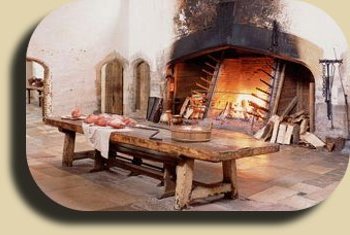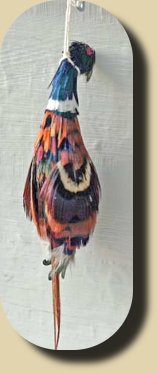
November 2010, Issue 10
The Tudors
Page 69
Continue The Tudors
 I love the architecture of these buildings; the grounds would normally have a well-stocked pond with trout, tench and carp. Also there would be farm animals, a dovecot and a deer park. Deer and wild boar would be hunted while on horseback.
I love the architecture of these buildings; the grounds would normally have a well-stocked pond with trout, tench and carp. Also there would be farm animals, a dovecot and a deer park. Deer and wild boar would be hunted while on horseback.
 The kitchens were naturally large to accommodate all of these rich and varied meals. It would need to be a pretty large Dolls House to have all these rooms but it is quite possible to reproduce a one in a room box. Typically they consisted of separate areas for various types of foods and baking methods:
The kitchens were naturally large to accommodate all of these rich and varied meals. It would need to be a pretty large Dolls House to have all these rooms but it is quite possible to reproduce a one in a room box. Typically they consisted of separate areas for various types of foods and baking methods:
■
The Pantry: Bread storage - hung in 'cars' from the ceilings to protect it
from vermin
■
The Buttery: Barrels of ale and wine were stored here. Buttery
comes from the word butt for barrel, in this instance
■
The Brew House: This is where they brewed the ale from hops,
barley and yeast
■
The Dry Larder: Almonds, spices etc. (wine and spices were
very expensive as they were shipped from overseas)
■
The Wet Larder: For fish, fresh, dried or pickled
■
The Flesh Larder: Meats and poultry were hung here
■
The Dairy: The area where the butter and cheese would be made
■
The Pastry: Housed the huge brick ovens where the bread and pies were baked
■
The Scullery: The washing and clearing up area
Custom Dolls, Houses & Miniatures / CDHM







